Power Generation
Transportation
Industrial Fuel
Commercial
Residential
Manufacturing
Shipping
Mining
Power Plants
Cryogenic Tanks
Non-Cryogenic Tanks
Portable Tanks
Cylinders
Bulk Delivery
Virtual Pipeline
North America
Europe
South America
Asia Pacific
Middle East and Africa
North America Outlook (USD Billion, 2019-2032)
North America Small Scale LNG Market by Application Type
Power Generation
Transportation
Industrial Fuel
Commercial
Residential
North America Small Scale LNG Market by End Use Type
Manufacturing
Shipping
Mining
Power Plants
North America Small Scale LNG Market by Storage Type
Cryogenic Tanks
Non-Cryogenic Tanks
Portable Tanks
North America Small Scale LNG Market by Delivery Method Type
Cylinders
Bulk Delivery
Virtual Pipeline
North America Small Scale LNG Market by Regional Type
US
Canada
US Outlook (USD Billion, 2019-2032)
US Small Scale LNG Market by Application Type
Power Generation
Transportation
Industrial Fuel
Commercial
Residential
US Small Scale LNG Market by End Use Type
Manufacturing
Shipping
Mining
Power Plants
US Small Scale LNG Market by Storage Type
Cryogenic Tanks
Non-Cryogenic Tanks
Portable Tanks
US Small Scale LNG Market by Delivery Method Type
Cylinders
Bulk Delivery
Virtual Pipeline
CANADA Outlook (USD Billion, 2019-2032)
CANADA Small Scale LNG Market by Application Type
Power Generation
Transportation
Industrial Fuel
Commercial
Residential
CANADA Small Scale LNG Market by End Use Type
Manufacturing
Shipping
Mining
Power Plants
CANADA Small Scale LNG Market by Storage Type
Cryogenic Tanks
Non-Cryogenic Tanks
Portable Tanks
CANADA Small Scale LNG Market by Delivery Method Type
Cylinders
Bulk Delivery
Virtual Pipeline
Europe Outlook (USD Billion, 2019-2032)
Europe Small Scale LNG Market by Application Type
Power Generation
Transportation
Industrial Fuel
Commercial
Residential
Europe Small Scale LNG Market by End Use Type
Manufacturing
Shipping
Mining
Power Plants
Europe Small Scale LNG Market by Storage Type
Cryogenic Tanks
Non-Cryogenic Tanks
Portable Tanks
Europe Small Scale LNG Market by Delivery Method Type
Cylinders
Bulk Delivery
Virtual Pipeline
Europe Small Scale LNG Market by Regional Type
Germany
UK
France
Russia
Italy
Spain
Rest of Europe
GERMANY Outlook (USD Billion, 2019-2032)
GERMANY Small Scale LNG Market by Application Type
Power Generation
Transportation
Industrial Fuel
Commercial
Residential
GERMANY Small Scale LNG Market by End Use Type
Manufacturing
Shipping
Mining
Power Plants
GERMANY Small Scale LNG Market by Storage Type
Cryogenic Tanks
Non-Cryogenic Tanks
Portable Tanks
GERMANY Small Scale LNG Market by Delivery Method Type
Cylinders
Bulk Delivery
Virtual Pipeline
UK Outlook (USD Billion, 2019-2032)
UK Small Scale LNG Market by Application Type
Power Generation
Transportation
Industrial Fuel
Commercial
Residential
UK Small Scale LNG Market by End Use Type
Manufacturing
Shipping
Mining
Power Plants
UK Small Scale LNG Market by Storage Type
Cryogenic Tanks
Non-Cryogenic Tanks
Portable Tanks
UK Small Scale LNG Market by Delivery Method Type
Cylinders
Bulk Delivery
Virtual Pipeline
FRANCE Outlook (USD Billion, 2019-2032)
FRANCE Small Scale LNG Market by Application Type
Power Generation
Transportation
Industrial Fuel
Commercial
Residential
FRANCE Small Scale LNG Market by End Use Type
Manufacturing
Shipping
Mining
Power Plants
FRANCE Small Scale LNG Market by Storage Type
Cryogenic Tanks
Non-Cryogenic Tanks
Portable Tanks
FRANCE Small Scale LNG Market by Delivery Method Type
Cylinders
Bulk Delivery
Virtual Pipeline
RUSSIA Outlook (USD Billion, 2019-2032)
RUSSIA Small Scale LNG Market by Application Type
Power Generation
Transportation
Industrial Fuel
Commercial
Residential
RUSSIA Small Scale LNG Market by End Use Type
Manufacturing
Shipping
Mining
Power Plants
RUSSIA Small Scale LNG Market by Storage Type
Cryogenic Tanks
Non-Cryogenic Tanks
Portable Tanks
RUSSIA Small Scale LNG Market by Delivery Method Type
Cylinders
Bulk Delivery
Virtual Pipeline
ITALY Outlook (USD Billion, 2019-2032)
ITALY Small Scale LNG Market by Application Type
Power Generation
Transportation
Industrial Fuel
Commercial
Residential
ITALY Small Scale LNG Market by End Use Type
Manufacturing
Shipping
Mining
Power Plants
ITALY Small Scale LNG Market by Storage Type
Cryogenic Tanks
Non-Cryogenic Tanks
Portable Tanks
ITALY Small Scale LNG Market by Delivery Method Type
Cylinders
Bulk Delivery
Virtual Pipeline
SPAIN Outlook (USD Billion, 2019-2032)
SPAIN Small Scale LNG Market by Application Type
Power Generation
Transportation
Industrial Fuel
Commercial
Residential
SPAIN Small Scale LNG Market by End Use Type
Manufacturing
Shipping
Mining
Power Plants
SPAIN Small Scale LNG Market by Storage Type
Cryogenic Tanks
Non-Cryogenic Tanks
Portable Tanks
SPAIN Small Scale LNG Market by Delivery Method Type
Cylinders
Bulk Delivery
Virtual Pipeline
REST OF EUROPE Outlook (USD Billion, 2019-2032)
REST OF EUROPE Small Scale LNG Market by Application Type
Power Generation
Transportation
Industrial Fuel
Commercial
Residential
REST OF EUROPE Small Scale LNG Market by End Use Type
Manufacturing
Shipping
Mining
Power Plants
REST OF EUROPE Small Scale LNG Market by Storage Type
Cryogenic Tanks
Non-Cryogenic Tanks
Portable Tanks
REST OF EUROPE Small Scale LNG Market by Delivery Method Type
Cylinders
Bulk Delivery
Virtual Pipeline
APAC Outlook (USD Billion, 2019-2032)
APAC Small Scale LNG Market by Application Type
Power Generation
Transportation
Industrial Fuel
Commercial
Residential
APAC Small Scale LNG Market by End Use Type
Manufacturing
Shipping
Mining
Power Plants
APAC Small Scale LNG Market by Storage Type
Cryogenic Tanks
Non-Cryogenic Tanks
Portable Tanks
APAC Small Scale LNG Market by Delivery Method Type
Cylinders
Bulk Delivery
Virtual Pipeline
APAC Small Scale LNG Market by Regional Type
China
India
Japan
South Korea
Malaysia
Thailand
Indonesia
Rest of APAC
CHINA Outlook (USD Billion, 2019-2032)
CHINA Small Scale LNG Market by Application Type
Power Generation
Transportation
Industrial Fuel
Commercial
Residential
CHINA Small Scale LNG Market by End Use Type
Manufacturing
Shipping
Mining
Power Plants
CHINA Small Scale LNG Market by Storage Type
Cryogenic Tanks
Non-Cryogenic Tanks
Portable Tanks
CHINA Small Scale LNG Market by Delivery Method Type
Cylinders
Bulk Delivery
Virtual Pipeline
INDIA Outlook (USD Billion, 2019-2032)
INDIA Small Scale LNG Market by Application Type
Power Generation
Transportation
Industrial Fuel
Commercial
Residential
INDIA Small Scale LNG Market by End Use Type
Manufacturing
Shipping
Mining
Power Plants
INDIA Small Scale LNG Market by Storage Type
Cryogenic Tanks
Non-Cryogenic Tanks
Portable Tanks
INDIA Small Scale LNG Market by Delivery Method Type
Cylinders
Bulk Delivery
Virtual Pipeline
JAPAN Outlook (USD Billion, 2019-2032)
JAPAN Small Scale LNG Market by Application Type
Power Generation
Transportation
Industrial Fuel
Commercial
Residential
JAPAN Small Scale LNG Market by End Use Type
Manufacturing
Shipping
Mining
Power Plants
JAPAN Small Scale LNG Market by Storage Type
Cryogenic Tanks
Non-Cryogenic Tanks
Portable Tanks
JAPAN Small Scale LNG Market by Delivery Method Type
Cylinders
Bulk Delivery
Virtual Pipeline
SOUTH KOREA Outlook (USD Billion, 2019-2032)
SOUTH KOREA Small Scale LNG Market by Application Type
Power Generation
Transportation
Industrial Fuel
Commercial
Residential
SOUTH KOREA Small Scale LNG Market by End Use Type
Manufacturing
Shipping
Mining
Power Plants
SOUTH KOREA Small Scale LNG Market by Storage Type
Cryogenic Tanks
Non-Cryogenic Tanks
Portable Tanks
SOUTH KOREA Small Scale LNG Market by Delivery Method Type
Cylinders
Bulk Delivery
Virtual Pipeline
MALAYSIA Outlook (USD Billion, 2019-2032)
MALAYSIA Small Scale LNG Market by Application Type
Power Generation
Transportation
Industrial Fuel
Commercial
Residential
MALAYSIA Small Scale LNG Market by End Use Type
Manufacturing
Shipping
Mining
Power Plants
MALAYSIA Small Scale LNG Market by Storage Type
Cryogenic Tanks
Non-Cryogenic Tanks
Portable Tanks
MALAYSIA Small Scale LNG Market by Delivery Method Type
Cylinders
Bulk Delivery
Virtual Pipeline
THAILAND Outlook (USD Billion, 2019-2032)
THAILAND Small Scale LNG Market by Application Type
Power Generation
Transportation
Industrial Fuel
Commercial
Residential
THAILAND Small Scale LNG Market by End Use Type
Manufacturing
Shipping
Mining
Power Plants
THAILAND Small Scale LNG Market by Storage Type
Cryogenic Tanks
Non-Cryogenic Tanks
Portable Tanks
THAILAND Small Scale LNG Market by Delivery Method Type
Cylinders
Bulk Delivery
Virtual Pipeline
INDONESIA Outlook (USD Billion, 2019-2032)
INDONESIA Small Scale LNG Market by Application Type
Power Generation
Transportation
Industrial Fuel
Commercial
Residential
INDONESIA Small Scale LNG Market by End Use Type
Manufacturing
Shipping
Mining
Power Plants
INDONESIA Small Scale LNG Market by Storage Type
Cryogenic Tanks
Non-Cryogenic Tanks
Portable Tanks
INDONESIA Small Scale LNG Market by Delivery Method Type
Cylinders
Bulk Delivery
Virtual Pipeline
REST OF APAC Outlook (USD Billion, 2019-2032)
REST OF APAC Small Scale LNG Market by Application Type
Power Generation
Transportation
Industrial Fuel
Commercial
Residential
REST OF APAC Small Scale LNG Market by End Use Type
Manufacturing
Shipping
Mining
Power Plants
REST OF APAC Small Scale LNG Market by Storage Type
Cryogenic Tanks
Non-Cryogenic Tanks
Portable Tanks
REST OF APAC Small Scale LNG Market by Delivery Method Type
Cylinders
Bulk Delivery
Virtual Pipeline
South America Outlook (USD Billion, 2019-2032)
South America Small Scale LNG Market by Application Type
Power Generation
Transportation
Industrial Fuel
Commercial
Residential
South America Small Scale LNG Market by End Use Type
Manufacturing
Shipping
Mining
Power Plants
South America Small Scale LNG Market by Storage Type
Cryogenic Tanks
Non-Cryogenic Tanks
Portable Tanks
South America Small Scale LNG Market by Delivery Method Type
Cylinders
Bulk Delivery
Virtual Pipeline
South America Small Scale LNG Market by Regional Type
Brazil
Mexico
Argentina
Rest of South America
BRAZIL Outlook (USD Billion, 2019-2032)
BRAZIL Small Scale LNG Market by Application Type
Power Generation
Transportation
Industrial Fuel
Commercial
Residential
BRAZIL Small Scale LNG Market by End Use Type
Manufacturing
Shipping
Mining
Power Plants
BRAZIL Small Scale LNG Market by Storage Type
Cryogenic Tanks
Non-Cryogenic Tanks
Portable Tanks
BRAZIL Small Scale LNG Market by Delivery Method Type
Cylinders
Bulk Delivery
Virtual Pipeline
MEXICO Outlook (USD Billion, 2019-2032)
MEXICO Small Scale LNG Market by Application Type
Power Generation
Transportation
Industrial Fuel
Commercial
Residential
MEXICO Small Scale LNG Market by End Use Type
Manufacturing
Shipping
Mining
Power Plants
MEXICO Small Scale LNG Market by Storage Type
Cryogenic Tanks
Non-Cryogenic Tanks
Portable Tanks
MEXICO Small Scale LNG Market by Delivery Method Type
Cylinders
Bulk Delivery
Virtual Pipeline
ARGENTINA Outlook (USD Billion, 2019-2032)
ARGENTINA Small Scale LNG Market by Application Type
Power Generation
Transportation
Industrial Fuel
Commercial
Residential
ARGENTINA Small Scale LNG Market by End Use Type
Manufacturing
Shipping
Mining
Power Plants
ARGENTINA Small Scale LNG Market by Storage Type
Cryogenic Tanks
Non-Cryogenic Tanks
Portable Tanks
ARGENTINA Small Scale LNG Market by Delivery Method Type
Cylinders
Bulk Delivery
Virtual Pipeline
REST OF SOUTH AMERICA Outlook (USD Billion, 2019-2032)
REST OF SOUTH AMERICA Small Scale LNG Market by Application Type
Power Generation
Transportation
Industrial Fuel
Commercial
Residential
REST OF SOUTH AMERICA Small Scale LNG Market by End Use Type
Manufacturing
Shipping
Mining
Power Plants
REST OF SOUTH AMERICA Small Scale LNG Market by Storage Type
Cryogenic Tanks
Non-Cryogenic Tanks
Portable Tanks
REST OF SOUTH AMERICA Small Scale LNG Market by Delivery Method Type
Cylinders
Bulk Delivery
Virtual Pipeline
MEA Outlook (USD Billion, 2019-2032)
MEA Small Scale LNG Market by Application Type
Power Generation
Transportation
Industrial Fuel
Commercial
Residential
MEA Small Scale LNG Market by End Use Type
Manufacturing
Shipping
Mining
Power Plants
MEA Small Scale LNG Market by Storage Type
Cryogenic Tanks
Non-Cryogenic Tanks
Portable Tanks
MEA Small Scale LNG Market by Delivery Method Type
Cylinders
Bulk Delivery
Virtual Pipeline
MEA Small Scale LNG Market by Regional Type
GCC Countries
South Africa
Rest of MEA
GCC COUNTRIES Outlook (USD Billion, 2019-2032)
GCC COUNTRIES Small Scale LNG Market by Application Type
Power Generation
Transportation
Industrial Fuel
Commercial
Residential
GCC COUNTRIES Small Scale LNG Market by End Use Type
Manufacturing
Shipping
Mining
Power Plants
GCC COUNTRIES Small Scale LNG Market by Storage Type
Cryogenic Tanks
Non-Cryogenic Tanks
Portable Tanks
GCC COUNTRIES Small Scale LNG Market by Delivery Method Type
Cylinders
Bulk Delivery
Virtual Pipeline
SOUTH AFRICA Outlook (USD Billion, 2019-2032)
SOUTH AFRICA Small Scale LNG Market by Application Type
Power Generation
Transportation
Industrial Fuel
Commercial
Residential
SOUTH AFRICA Small Scale LNG Market by End Use Type
Manufacturing
Shipping
Mining
Power Plants
SOUTH AFRICA Small Scale LNG Market by Storage Type
Cryogenic Tanks
Non-Cryogenic Tanks
Portable Tanks
SOUTH AFRICA Small Scale LNG Market by Delivery Method Type
Cylinders
Bulk Delivery
Virtual Pipeline
REST OF MEA Outlook (USD Billion, 2019-2032)
REST OF MEA Small Scale LNG Market by Application Type
Power Generation
Transportation
Industrial Fuel
Commercial
Residential
REST OF MEA Small Scale LNG Market by End Use Type
Manufacturing
Shipping
Mining
Power Plants
REST OF MEA Small Scale LNG Market by Storage Type
Cryogenic Tanks
Non-Cryogenic Tanks
Portable Tanks
REST OF MEA Small Scale LNG Market by Delivery Method Type
Cylinders
Bulk Delivery
Virtual Pipeline
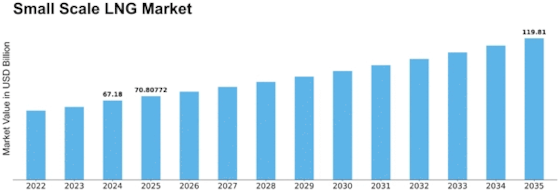


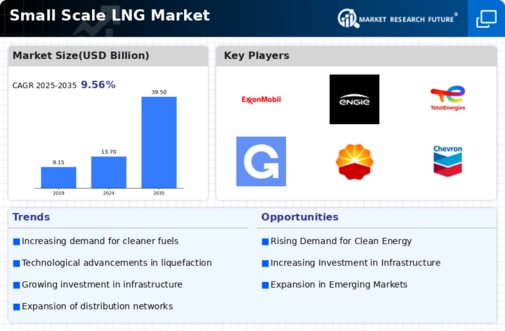
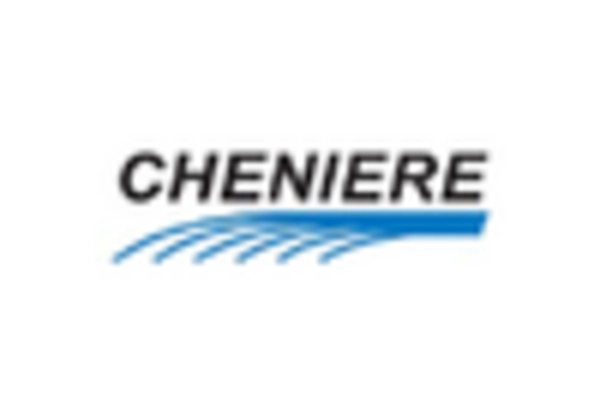
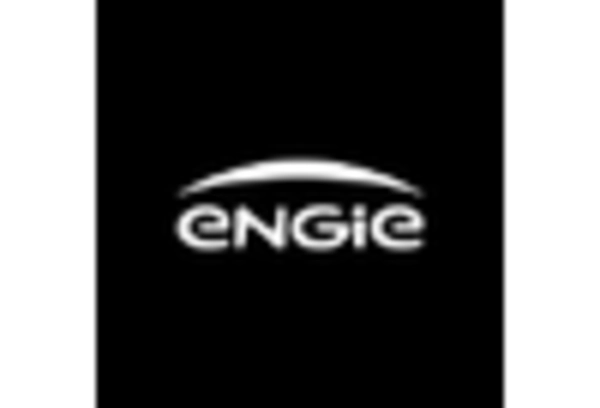

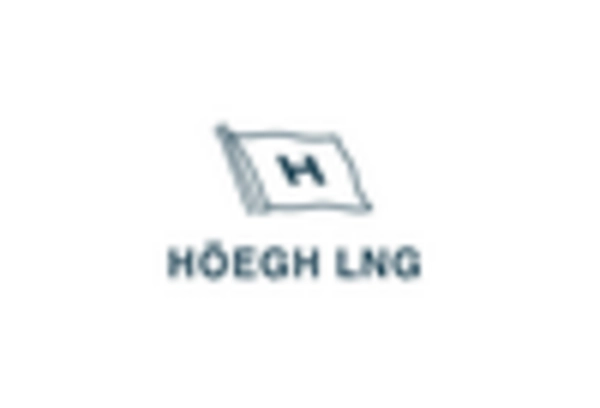
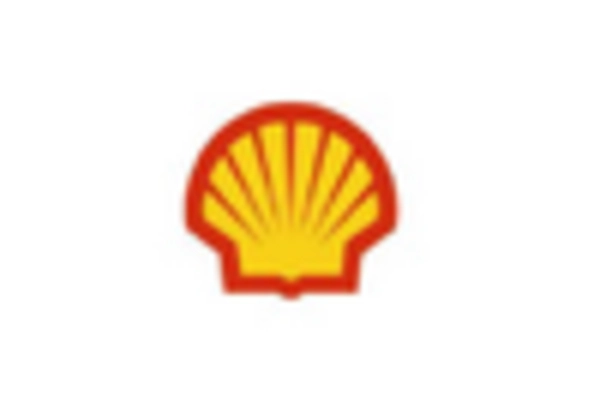
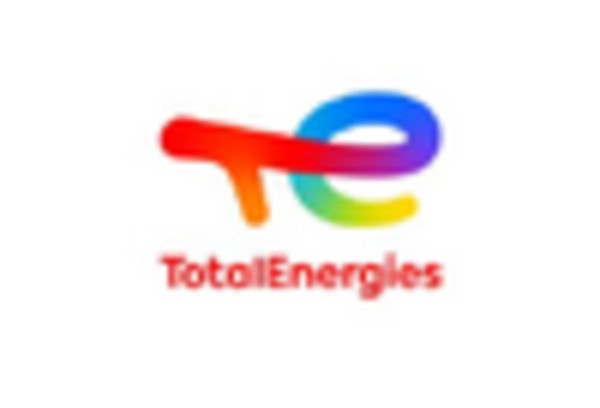









Leave a Comment